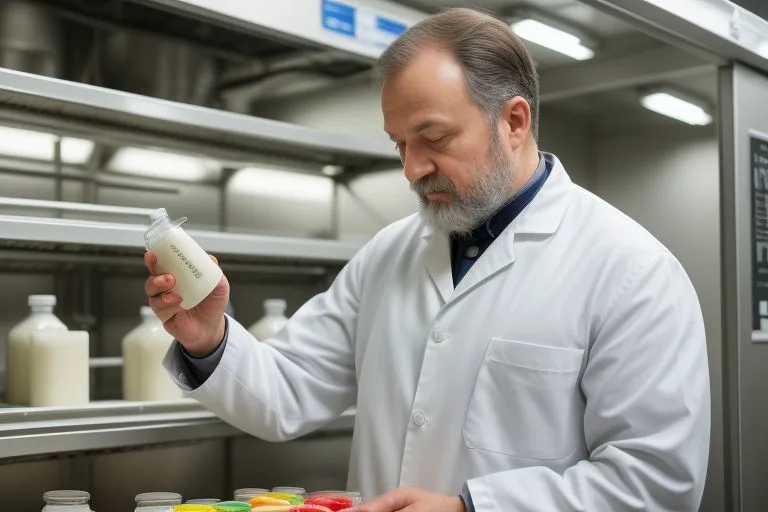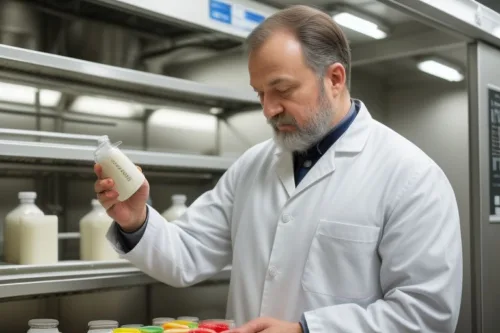
Pasteurized milk is a powerhouse of essential nutrients—calcium, protein, vitamins D and B12—delivered in a safe, hygienic form that protects you from harmful pathogens. Developed by Louis Pasteur in the 1860s, modern pasteurization techniques such as High‑Temperature Short‑Time (HTST) and Ultra‑High Temperature (UHT) have perfected the balance between safety, taste, and nutrition without compromising quality Wikipedia Encyclopedia Britannica. From bolstering bone health and supporting immune function to extending shelf life and reducing foodborne illness, this simple heat treatment remains one of the most impactful food‑safety innovations in history AZ DietitiansCDC. Dive into these seven astonishing benefits of pasteurized milk, learn how to select and store it for maximum freshness, and discover delicious ways to include it in your daily routine.

What Is Pasteurized Milk?
Pasteurized milk is milk that’s been heated to a precise temperature—commonly 161 °F for 15 seconds (HTST) or 145 °F for 30 minutes (LTLT)—to eliminate disease‑causing microorganisms such as E. coli, Listeria, and Salmonella NAL Agricultural ThesaurusWikipedia. This process dramatically cuts the risk of foodborne illness without affecting the milk’s core nutritional value CDC. While not a sterilization method, pasteurization deactivates enzymes and bacteria that lead to spoilage, extending refrigerated shelf life to about two weeks for HTST products and up to nine months unopened for UHT varieties WikipediaFood & Wine.
A Brief History of Pasteurization
In 1862, French chemist Louis Pasteur discovered that heating wine and beer to moderate temperatures could prevent spoilage by killing microbes—a breakthrough that soon applied to milk World Food Program USAWikipedia. By 1886, German chemist Franz von Soxhlet successfully adapted Pasteur’s method for milk, dramatically reducing infant mortality linked to contaminated dairy The Lancet. The practice gained traction worldwide, with industrial pasteurization officially adopted in many European and American cities by the early 20th century, revolutionizing public health and milk distribution Science History InstituteWikipedia.
How Pasteurization Works
-
High‑Temperature Short‑Time (HTST): Milk is heated to 161 °F (71.5 °C) for 15 seconds, then rapidly cooled. This method balances safety with minimal flavor change and provides about two weeks of refrigerated shelf life NAL Agricultural ThesaurusWikipedia.
-
Low‑Temperature Long‑Time (LTLT): Also called vat pasteurization, it heats milk to 145 °F (63 °C) for 30 minutes. Favored by artisanal creameries, it preserves more of the milk’s natural taste but requires longer processing times NAL Agricultural Thesaurus.
-
Ultra‑High Temperature (UHT): Milk is flash‑heated to 275 °F (135 °C) for a few seconds, killing nearly all bacteria and spores. Packaged aseptically, UHT milk lasts six to nine months unopened without refrigeration Food & Wine.
Nutritional Profile of Pasteurized Milk
A single 8‑ounce serving of whole pasteurized milk delivers:
-
Calories: ~150 kcal
-
Protein: 8 g, containing all essential amino acids |’Nutritionix’
-
Calcium: 300 mg (≈30% DV), vital for bone and tooth health AZ Dietitians.
-
Vitamin D: Fortified to 100 IU (≈25% DV) to aid calcium absorption Meadow Gold® Dairy.
-
Potassium: 350 mg (≈10% DV), supporting heart and muscle function Meadow Gold® Dairy.
Although pasteurization slightly reduces some heat‑sensitive vitamins, studies show the overall nutrient differences between raw and pasteurized milk are negligible Health.
7 Astonishing Benefits of Pasteurized Milk
1. Superior Safety Reducing Foodborne Illness
By destroying pathogens like Salmonella, Listeria, and E. coli, pasteurized milk slashes the risk of severe infections that raw milk can carry CDC. The CDC strongly advises consuming only pasteurized dairy products to prevent outbreaks CDC.
2. Reliable Nutrient Delivery
Pasteurization ensures that every carton provides consistent levels of calcium, protein, and vitamins—a key advantage for vulnerable groups like children, women, and the olden AZ Dietitians
3. Extended Shelf Life
Thanks to HTST, pasteurized milk stays fresh in the fridge for up to two weeks, reducing waste and grocery trips Wikipedia. Ultra‑pasteurized options last up to three months unopened, perfect for low‑consumption households Food & Wine.
4. Enhanced Digestibility
Homogenization—often paired with pasteurization—breaks fat globules into smaller, uniform sizes, aiding digestion and preventing cream separation .
5. Consistent Quality and Flavor
Controlled heating eliminates off‑flavors from spoilage bacteria while retaining the milk’s natural sweetness and smooth mouthfeel Working Cows Dairy.
6. Supports Bone and Dental Health
Regular intake of pasteurized milk—rich in bioavailable calcium and vitamin D—strengthens bones, reduces osteoporosis risk, and maintains healthy teeth AZ Dietitians.
7. Versatile Culinary Ingredient
From creamy smoothies and lattes to custards and sauces, pasteurized milk is a kitchen staple that blends seamlessly into sweet and savory dishes alike.
Pasteurized Milk vs. Raw Milk: Myths and Facts
-
Myth: Raw milk has more nutrients.
Fact: Both raw and pasteurized milk share similar macro‑ and micronutrient profiles; pasteurization does not meaningfully diminish nutritional value Health. -
Myth: Pasteurization destroys beneficial enzymes.
Fact: While heat can inactivate some enzymes, the health impact is minimal, and the safety benefits far outweigh any theoretical losses Health. -
Myth: Raw milk prevents allergies and asthma.
Fact: Claims lack robust scientific backing, and the CDC warns of severe risks, especially for children and immunocompromised individuals CDCVerywell Health.
How to Choose and Store Pasteurized Milk
-
Check the Label: Look for “pasteurized” and the method (HTST or UHT).
-
Inspect the Sell‑By Date: Buy the freshest carton to maximize shelf life.
-
Refrigeration: Keep at or below 40 °F (4 °C); avoid storing in the fridge door where temperatures fluctuate Sustainably Delicious.
-
Use Within: Consume HTST milk within 7–10 days of opening; UHT milk within 7 days after opening Allrecipes.
-
Freeze for Long‑Term: Freeze pasteurized milk in an airtight container for up to three months; thaw in the fridge and shake well before use.
Delicious Ways to Enjoy Pasteurized Milk
-
Power Smoothie: Blend pasteurized milk with banana, spinach, and berries for a nutrient‑packed breakfast.
-
Creamy Soups: Enrich soups like tomato bisque with milk for velvety texture.
-
Overnight Oats: Mix oats, pasteurized milk, chia seeds, and honey; refrigerate overnight for grab‑and‑go nutrition.
-
Baked Goods: Substitute milk in pancakes, muffins, and custards for tender crumb and rich flavor.
Frequently Asked Questions (FAQ)
Q: Is pasteurized milk lactose‑free?
A: Lactose‑free milk is produced by adding lactase, separate from pasteurization; always check the label.
Q: Does pasteurization affect taste?
A: HTST‑pasteurized milk tastes virtually the same as raw milk, while UHT may have a slightly caramelized note due to the Maillard reaction Food & Wine.
Q: Can infants drink pasteurized milk?
A: For babies under one year, breast milk or formula is recommended; consult a pediatrician before introducing cow’s milk.
Pasteurized milk is more than just a dairy staple—it’s a testament to the power of simple technology in safeguarding public health. With its robust safety profile, consistent nutrition, long shelf life, and culinary versatility, it’s no wonder this humble beverage has endured for over a century. Embrace the astonishing benefits of pasteurized milk, and make it a delicious, nourishing part of your daily routine.
Reference Links:



